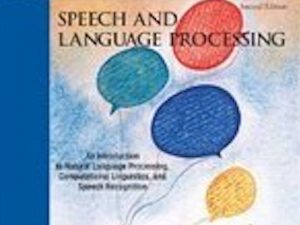An overview of the background and maths behind linear-prediction methods for modelling the vocal tract as a filter.
Taylor – Section 12.7 – Pitch and epoch detection
Only an outline of the main approaches, with little technical detail. Useful as a summary of why these tasks are harder than you might think.
Jurafsky & Martin – Section 8.5 – Unit Selection (Waveform) Synthesis
A brief explanation. Worth reading before tackling the more substantial chapter in Taylor (Speech Synthesis course only).
Jurafsky & Martin – Section 8.4 – Diphone Waveform Synthesis
A simple way to generate a waveform is by concatenating speech units from a pre-recorded database. The database contains one recording of each required speech unit.
Taylor – Section 10.2 – Digital signals
Going digital involves approximations in the way an original analogue signal is represented.
Taylor – Section 10.1 – Analogue signals
It’s easier to start by understanding physical signals – which are analogue – before we then approximate them digitally.
Holmes & Holmes – Chapter 6 – Phonetic Synthesis by Rule
Mainly of historical interest.
Holmes & Holmes – Chapter 5 – Message synthesis from stored human speech components
Pitch-synchronous overlap-and-add (PSOLA) remains a key technique in speech signal processing.
Ladefoged (Elements) – Chapter 11 – Digital filters and LPC analysis
A brave attempt to use ‘long hand’ to spell out how LPC analysis works, but not a recommended reading.
Ladefoged (Elements) – Chapter 10 – Fourier analysis
An attempt to explain Fourier analysis. Although chapters 1-9 are great, I actually do not recommend chapter 10.

